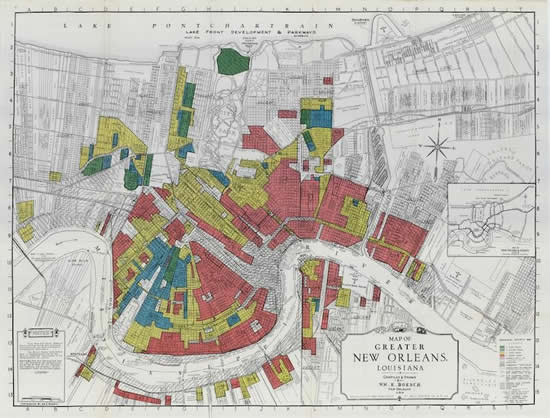New study links historical redlining to delays in HIV treatment
November 11, 2024 | Andrew Yawn ayawn@tulane.edu

The study found that those living in once historically redlined neighborhoods experience 15% longer delays to achieving viral suppression of HIV than those in non-redlined areas.
(Photo by Shutterstock)
A new study from Tulane University finds that historical, race-based lending practices are still impacting health today, linking these discriminatory policies to delays in effective HIV treatment within affected neighborhoods.
The lending practice, called redlining, was abolished in 1968. Yet, those living in once historically redlined neighborhoods experience 15% longer delays in achieving viral suppression of HIV compared to those in non-redlined areas, according to the study published in JAMA Internal Medicine.
The disparity can impact both individual health outcomes and public health efforts to curb the spread of HIV, said senior author Scott Batey, PhD, professor at Tulane’s School of Social Work.
“...Place matters and we are unable to escape historical implications and characteristics of the neighborhoods in which we live.”
Scott Batey, professor at Tulane University School of Social Work
“HIV is, in many ways, a disease of poverty, and this shows how discriminatory practices that limited economic opportunities for previous generations can have a cascading effect upon the neighborhoods in which we live today,” Batey said.
Redlining involves denying services to residents in certain areas based on their race or ethnicity. The term comes from the practice of mortgage lenders drawing red lines on maps to indicate areas where they wouldn't make loans. The divestment from those neighborhoods created long-term gaps in health care access, education and household income that affected residents for decades.
The study, which is the first to examine the impact of redlining on HIV treatment, sheds light on how historical discrimination continues to affect modern-day health outcomes. It was conducted in collaboration with the Louisiana Department of Health and the University of Alabama at Birmingham.
Researchers examined 1,132 New Orleans residents newly diagnosed with HIV between 2011 and 2019 and found that, post-diagnosis, those living in once-redlined neighborhoods were estimated to achieve viral suppression of HIV almost a month slower than those living in non-historically redlined neighborhoods (193 days compared to 164).
Once diagnosed, HIV can be treated in as little as a month, and treatment is as simple as taking one pill a day. The longer the time between diagnosis and treatment, however, the higher the chances of HIV spreading.
In the case of one resident of a redlined neighborhood, there was a 4-year gap between diagnosis and suppression.
“The reasons some lag behind in treatment are obviously much more complex, from stigma to denial,” Batey said. “However, this paper shows us that environment does play a factor. Place matters and we are unable to escape historical implications and characteristics of the neighborhoods in which we live.”
Of the residents included in the study, 62% live in previously redlined neighborhoods. The majority were men ages 25-44, and despite New Orleans’s population being majority Black, the study found more Black individuals in redlined neighborhoods than non-redlined.
Notably, the delay in treatment did not change based on whether a neighborhood was experiencing gentrification.
Previous studies have linked living in a historically redlined neighborhood to higher risks of heart failure, obesity, high blood pressure and other conditions that increase risk of an early death.
While the study only included New Orleans residents, the findings are significant for cities across the Deep South, where redlining was historically prevalent and where more than 50% of the new HIV cases are currently being reported.
Batey said that by better understanding which areas are seeing longer delays in HIV treatment outcomes, health care workers can work to more effectively promote and deliver HIV treatment – and hopefully curb the spread of the disease.
“If we can make services more accessible and get people virally suppressed sooner, I think the impact on the HIV epidemic can be quite significant,” Batey said. “More education, on-site testing, telehealth appointments, those kinds of things can happen at the grassroots level in all communities and begin to help people to start on equitable ground.”

Redlining was abolished in 1968, but the practice allowed banks to limit wealth opportunities for communities of color, resulting in long-term gaps in health care access, education and household income.
Contact:
Andrew Yawn | Assistant Director of Media Relations
Tulane University Communications and Marketing
Office: 504.247.1443 | Mobile: 985.285.7689
ayawn@tulane.edu | news.tulane.edu

Source:https://news.tulane.edu/pr/new-study-links-historical-redlining-delays-hiv-treatment
"Reproduced with permission - TULANE UNIVERSITY"
TULANE UNIVERSITY
For more HIV and AIDS News visit...
Positively Positive - Living with HIV/AIDS:
HIV/AIDS News
|